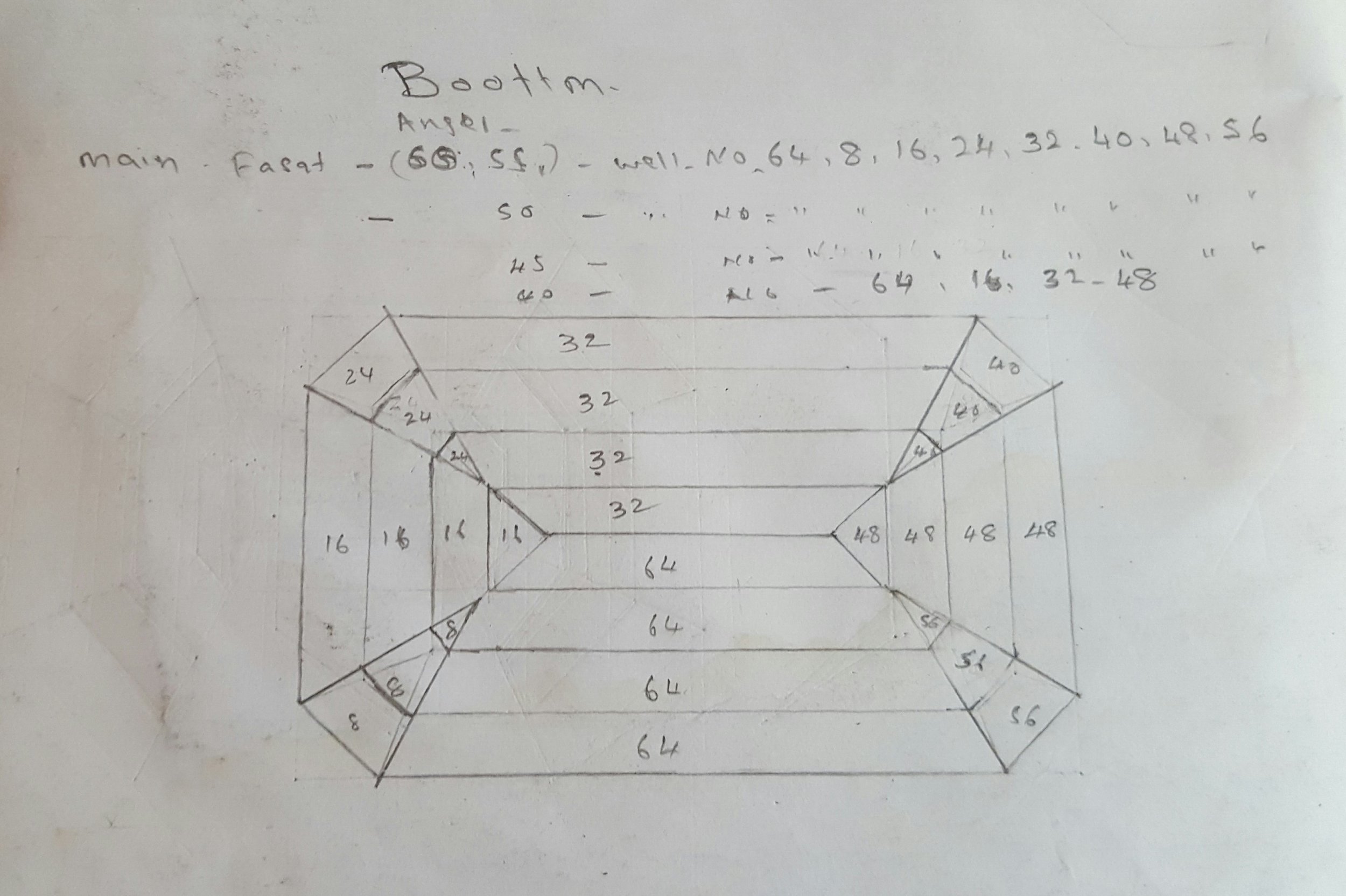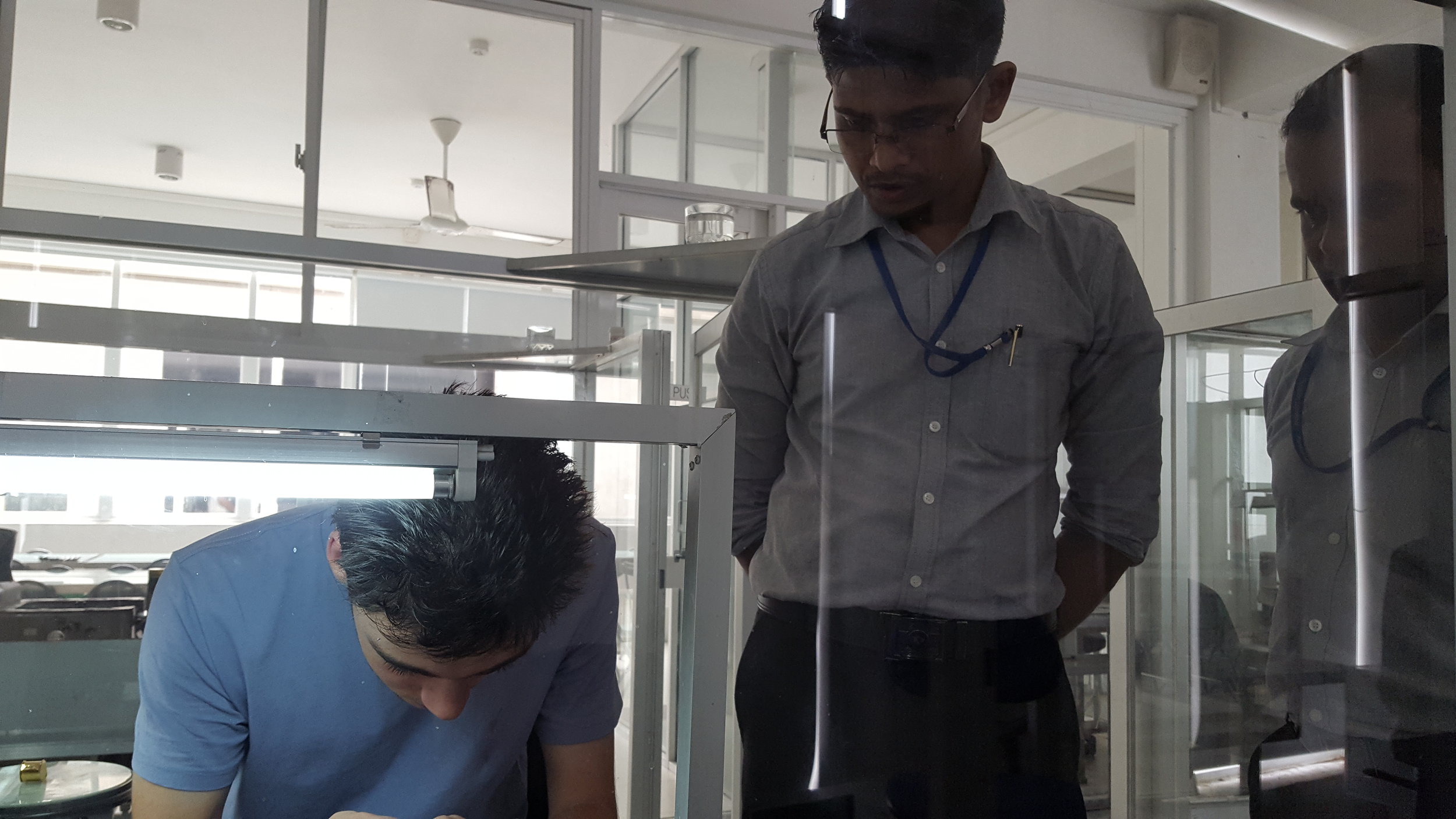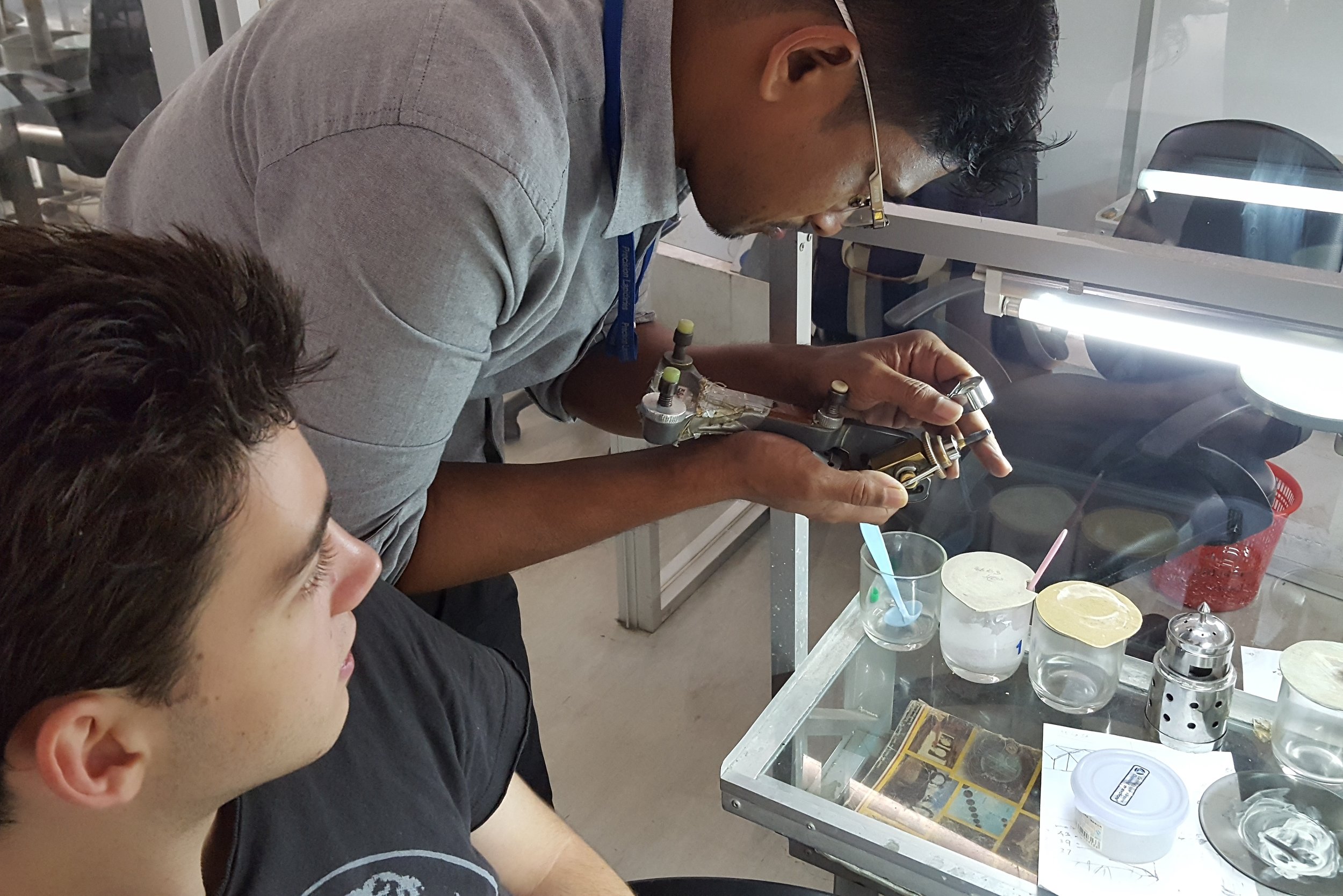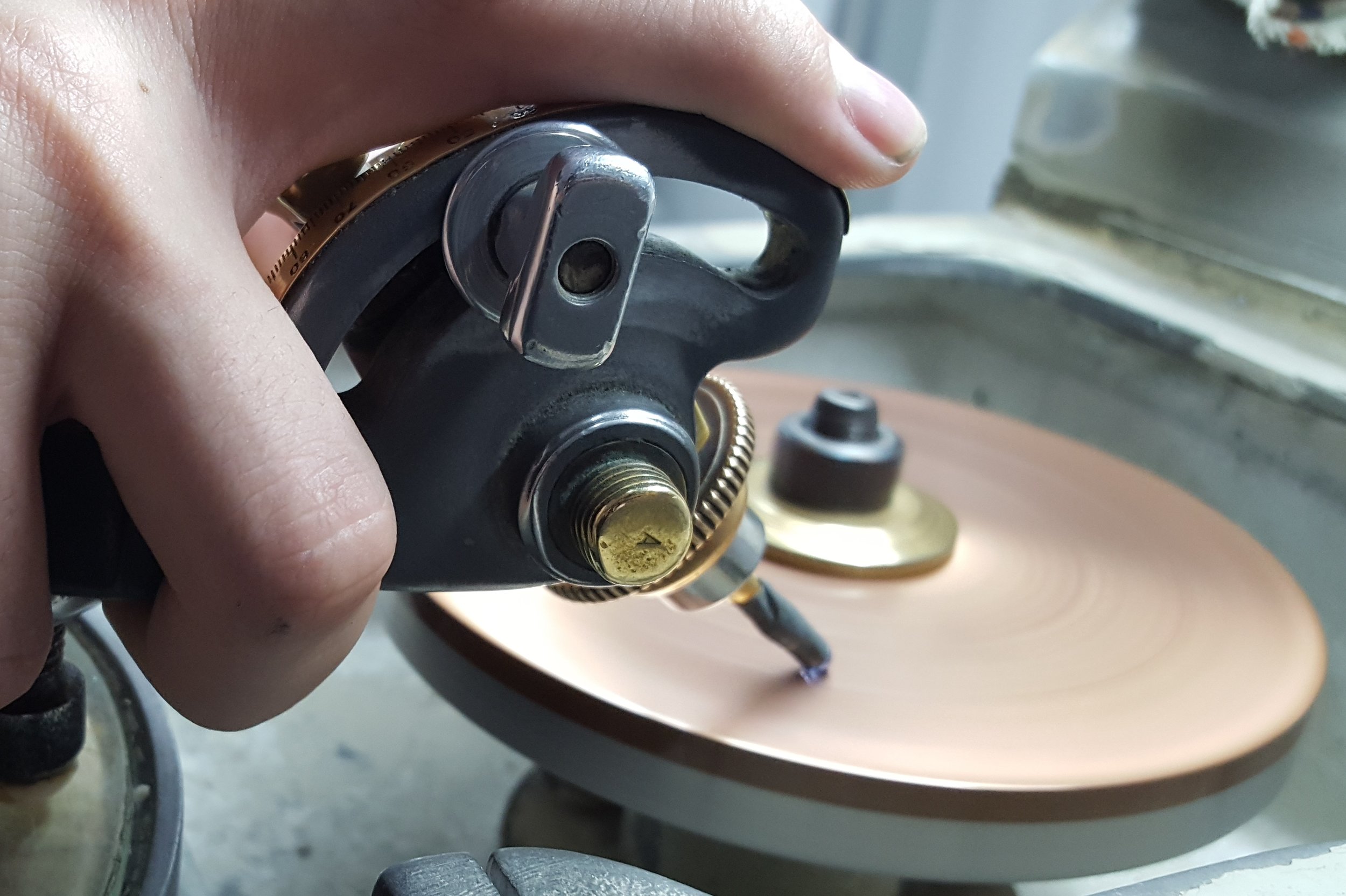Insider View: Sri Lanka Sapphire Family Business
I’d like to share with you a saga of Ceylon sapphires, a personal tale that extends almost 30 years. It begins in Los Angeles with a new friendship, and expands to gem hunting expeditions and immersion into the sapphire business in Sri Lanka.
This is an incredible insider view into a very closely held industry in Sri Lanka. Over the past months, and stretching back for years, I’ve been able to meet the family businesses, miners, government officials, the big bosses, and the artisans who craft and cut raw conundrum into the beautiful Ceylon sapphires that I will showcase in my jewelry.
None of this would have been possible without the connections due to my dear friend Aly and his family. It is a rare honor, even for GIA gemologists, to be invited to the homes of the sapphire mine owners or meet the most important figures in the industry. Without their gracious invitations, I would not have been able to see the mines or better yet, purchase some amazing sapphires, never before shown to the public.
Right: Paloma with Aly Farook and Rosy Senanayake, the spokesperson and Deputy Head of the Prime Minister's Office for Prime Minister Ranil Wickramasinghe
From GIA Friendship to a “Royal” Sapphire Family in Sri Lanka
My years studying at the Gemological Institute of America were a turning point in my life, not only because of the knowledge and expertise that I gained, but the lifelong friendships and network that I made. My classmates came from all over the globe, usually from gem-cutting families, family businesses with mines and gem dealerships. As a result, I am honored and thankful to have dear friends in all corners of the globes whom I can visit, trust, and work with while on my gem hunting expeditions.
With my GIA class, and me holding my diploma, with my teacher
I became even closer to my good friend Aly Farook, who grew up in a family who has been in the gemstone business for over 135 years, starting in Ceylon, which is now Sri Lanka. Over the years, we each had our own orbit...I grew up in Europe and moved to China, while he grew up in Hong Kong and lived in Japan, the U.S., and Canada. Our lives intersected at the top shows in the gemstone industry – the Gem & Mineral Show in Tucson, Arizona, Baselworld, the World Watch and Jewellery Show in Switzerland, and more. Sometimes I would be there as a participant, sometimes as an exhibitor myself, while Aly and his family always had a grand presence, exhibiting their exquisite stones.
Paloma with her friend Aly Farook last year in Tucson, Arizona, at the Mineral and Gemstone Show
Prince M.U.M. Salie – Global Sapphire Entrepreneur
Aly’s great grandfather, Prince M.U.M. Salie, was a gemstone entrepreneur extraordinaire. Travelling by steamship for months at a time, he would carefully take suitcases of gemstones from his Ceylonese mines to exhibit at world exhibitions in North America as early as 1915. Thousands and thousands of people – and remember, this is the age well before the Internet – saw the most exquisite colored gems for the first time. A well-respected figure, he gained such fame that one gemstone was known as the salie stone – until the GIA renamed it as moonstone to better reflect its white color and particular phenomena called adularescence, referencing the color and milky shine of the moon.
Over 5 generations, the Farook family expanded to owning opal mines in Australia, and sapphire and ruby deposits in Ceylon and Burma. They also employ the generations of artisans who craft the finest stones into exquisite stones for jewelry.
“Empress Padparadscha” – the legendary and authentic padparadscha
One legendary stone from this beautiful family is an incredible, jaw-dropping padparascha sapphire. It was so incredible that it has been given the name "Empress Padparadscha". Not only was the Empress near flawless, but it had a grand size. And, it had the honor of being the very first padparadscha to be fully-certified by GIA. Real padparadscha sapphires are extremely rare; most padparadscha sapphires are labeled at most, “padparadscha-like” sapphire, but not (full) padparadscha.
Ceylon Sapphires, a Closely-Knit Family Industry
My good friend Aly Farook shared his story of his family’s sapphire business.
We in the gem industry are a world apart from the corporations and contracts in the global economy. Trust is the core foundation and soul of the gem industry. As the gemstone passes from hand to hand within the trade so does our gem business often run on the trust and agreement of a simple handshake.
Trust begins at home. Traditionally, the gemstone industry has been an in-house affair from the time the rough stone is purchased, processed, and eventually reaching the consumer. Spouses become your safe keepers and guardians of your inner trading. Children grow up in an environment of trading and manufacturing landscape; from an early age, they absorb the trade jargon and etiquette and practices.
A young Aly was fascinated by one of the lapidaries at work at the family factory
Aly comes from a family tradition that goes back five generations in the gem industry. From his grandfathers who founded gem businesses in the U.S., New Zealand, China and Burma, to his own father who ventured to Hong Kong and established a colored gemstone establishment there in 1966.
Hong Kong was an ideal location being both a duty-free port and an international trading hub between the East and the West. The growing glamour and affluence in the city transformed Hong Kong into a prestigious market for the finest colored gemstones. Importantly, Hong Kong stood steady while many of the source countries were going through internal and political struggles at the time and were dangerous places to visit. Hong Kong became a haven for gemstone traders.
For Aly, growing up in Hong Kong in the 70s and 80s was a curious and interesting time, flavored in the last dip of colonialism and sautéed in the emerging globalization trend. Seeking to deepen his expertise, Aly left Hong Kong for Los Angeles where he attended the GIA, and of course, met Paloma.
Paloma with Aly’s mother and cousins in their Sri Lankan home
Sri Lanka Sapphire Cutting Apprenticeship
My son Pablo had an inside perspective on what it was like to become part of a Sri Lanka family and to learn the trade. He had a summer apprenticeship alongside Aly’s own son to learn how to cut sapphires at Aly’s family’s sapphire-cutting factory, the largest in Sri Lanka. Here’s a peek into his experience.
He began with an introduction to all the cuts that he would learn: round brilliant, emerald step and round step. These cuts would showcase the beautiful Ceylon sapphires which are exquisite and highly prized for their blue color which can range from pale or greenish-blue to purplish-blue the most vivid indigo-blue.
Pablo began with a printed diagram of the intended cut. Pablo aligned these numbers with the faceting wheel to carefully make each cut. Cut by cut, step by step, he learned the process, and by the end of the first day, he had cut two sapphires’ crowns, the top faceted part of the gemstone.
From cutting, he moved on to the art of polishing. By the morning of the third day, he and his classmate had finished their first complete sapphire. Once completed, their sapphires were measured for their “yield”, a final score indicating how much wastage was produced with their cutting and polishing. This coefficient ideally should be close to 30%, although the score can vary depending on the stone’s quality. Any more wastage, and the sapphire and its cutter would be investigated for reasons behind the wastage.
Pablo acquired a deep appreciation for both the art and science of sapphire cutting and polishing. Clearly, it takes lifelong masters to coax the perfect beauty out of each and every sapphire, one very small cut at a time.
New Venture for the Salie Family
I was excited to take part in the launch of the Salie family's new jewelry line Natural Sapphire Blue showcasing the finest Ceylon sapphires. They have invited me to be a featured designer for the brand!
Aly's cousin Faiq Salie heads FJC and this new jewelry line. Since the family has produced the finest quality cuts of sapphire for generations, it’s no surprise that their sapphires are particularly gorgeous. This is where the artisanship and technology know-how really matter. The sapphires are precision cut, and heated with a very special (secret!) method, and of course, calibrated for consistent color and size for jewelry making. No wonder that the company is a Registered Vendor of Tiffany’s.
One-of-a-kind Natural Sapphire Blue tiaras were created for the evening. They were worn by Miss Tourism International (from the Netherlands) and famous Thai actressNampetech Sunannipar.
Given Aly's family's prominence in the industry, many sapphire industry dignitaries attended, even some of the reclusive big mine bosses. Aly's mother was the proud, sole female titan to attend.
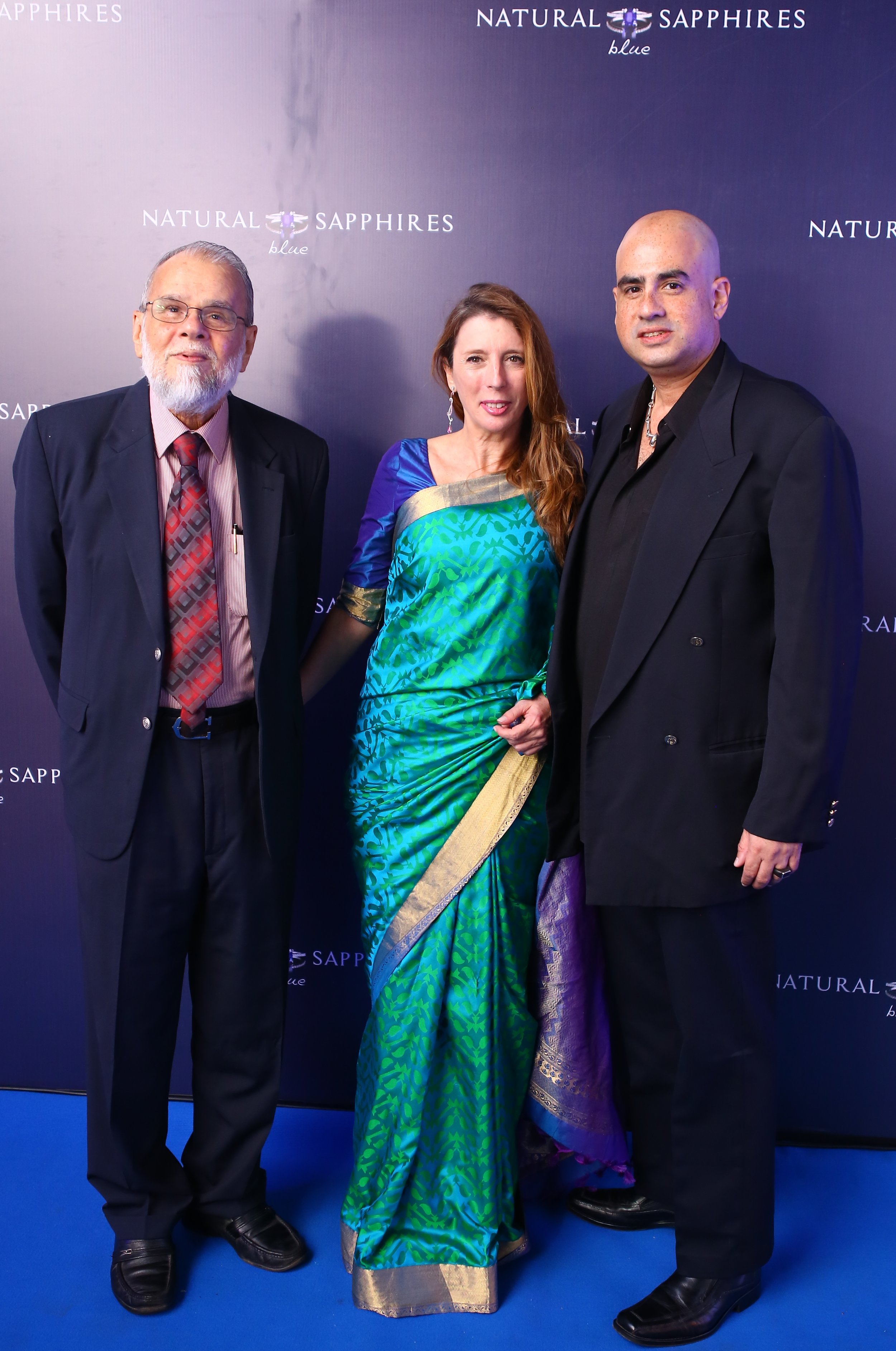
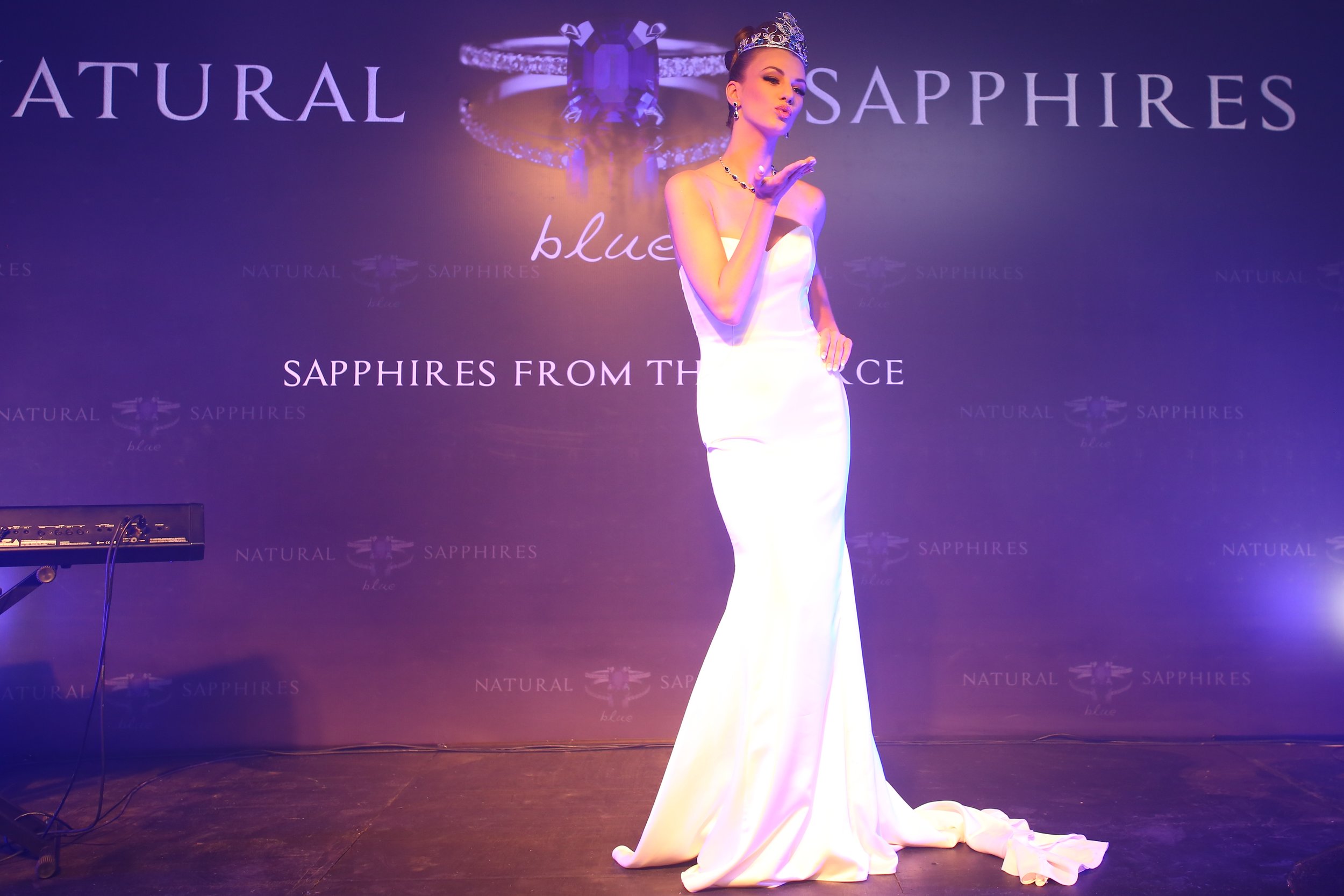
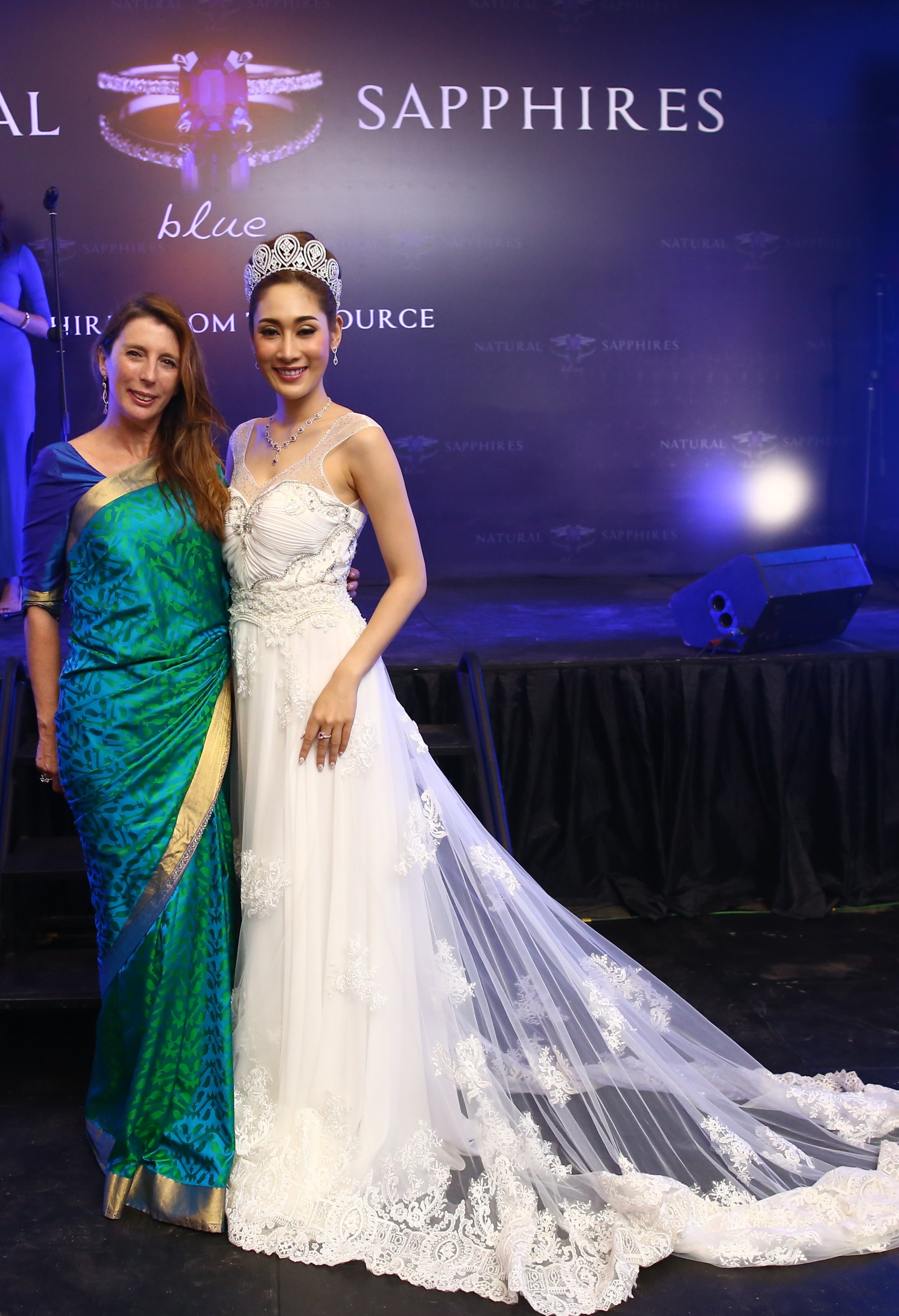
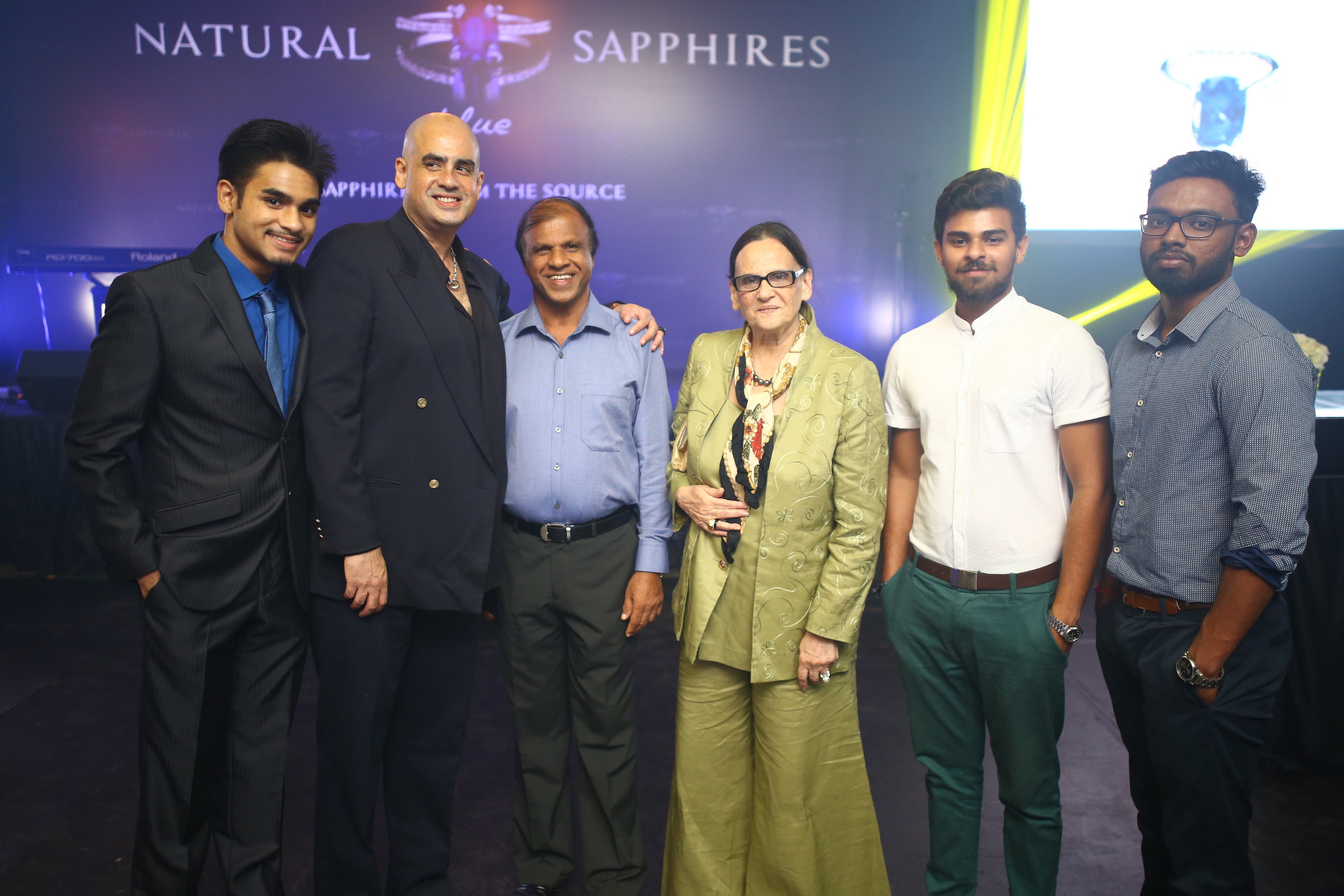
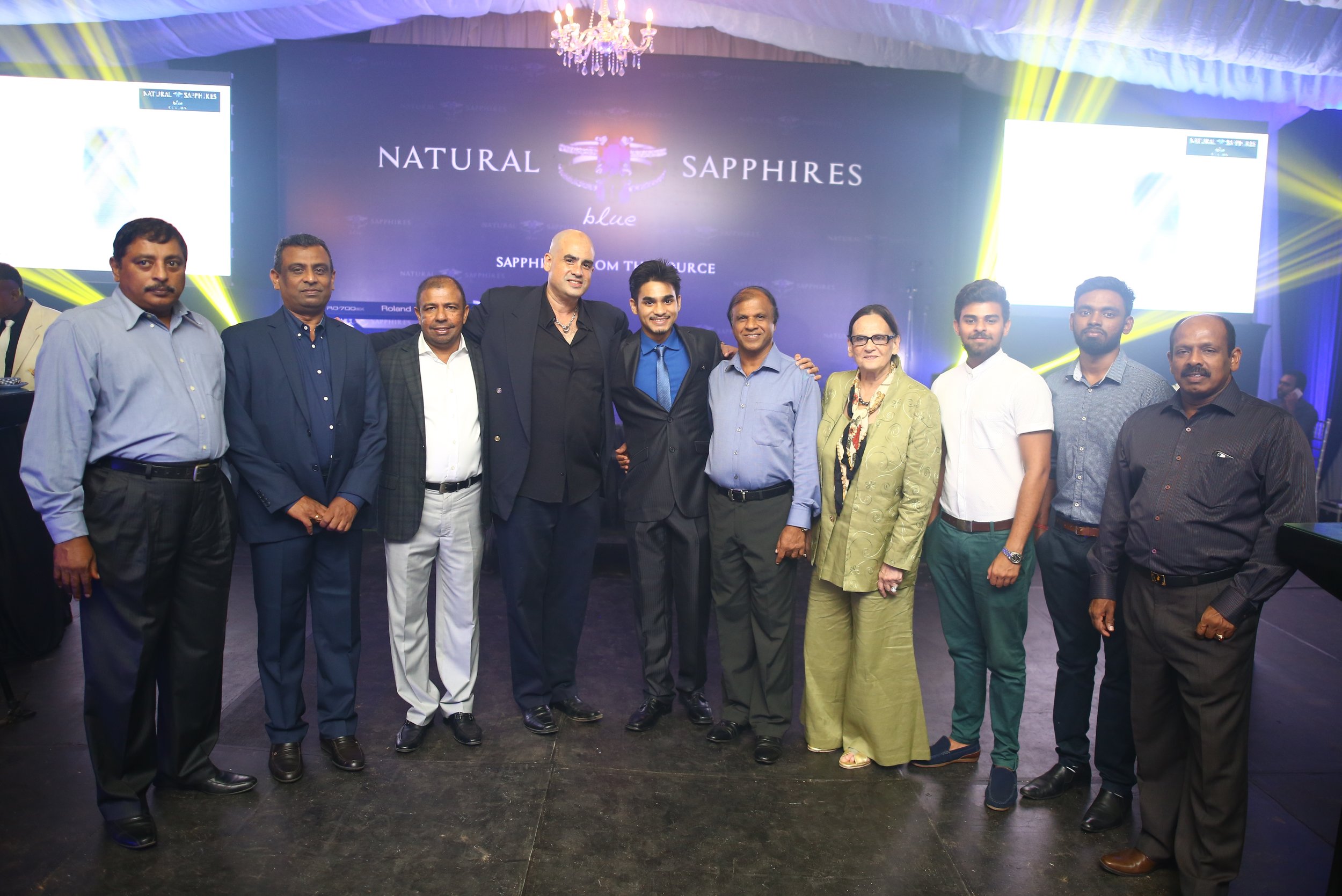
Paloma Sanchez Jewelry showcasing Ceylon Sapphires
Below are some of my current pieces, now on display, that feature fancy pink sapphires from Sri Lanka. Be patient for some more amazing pieces!













